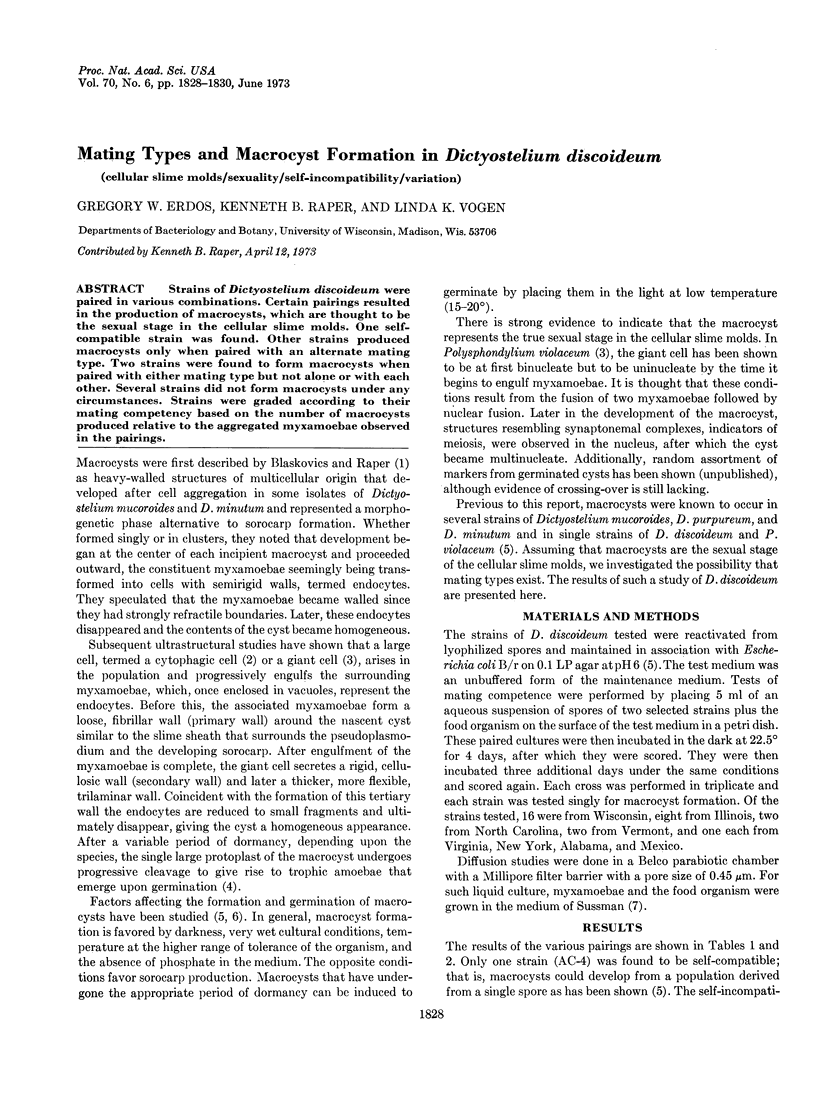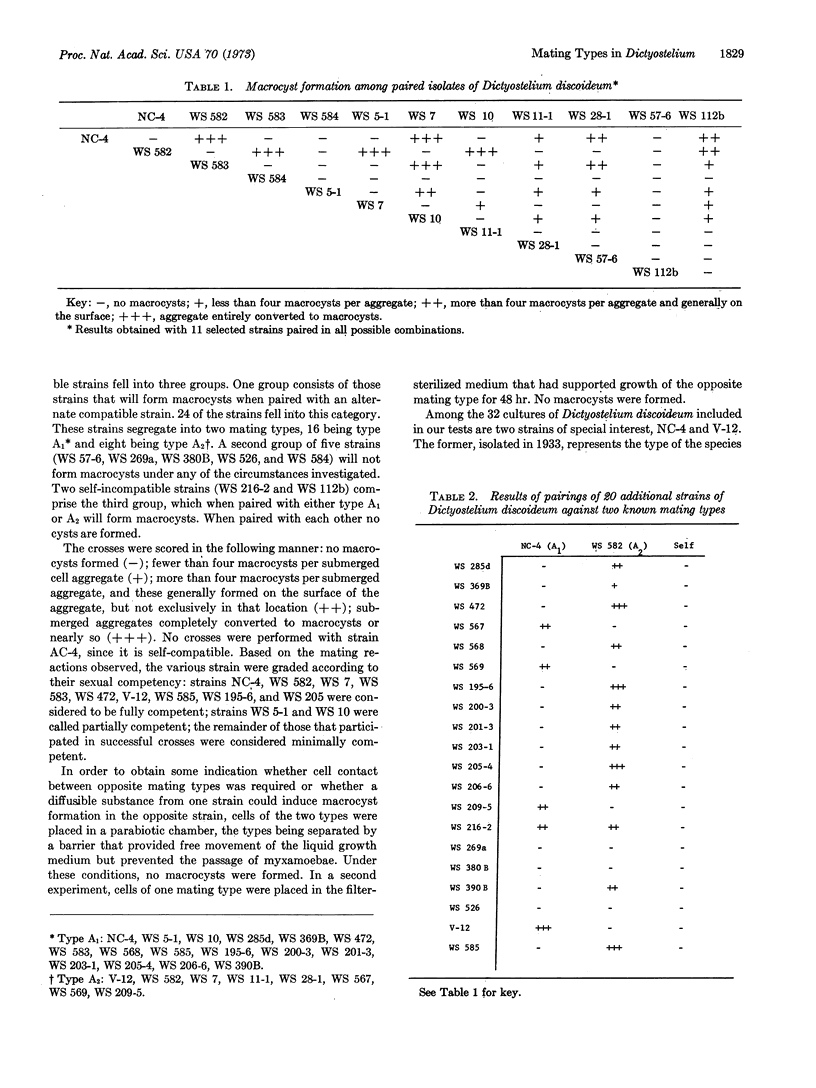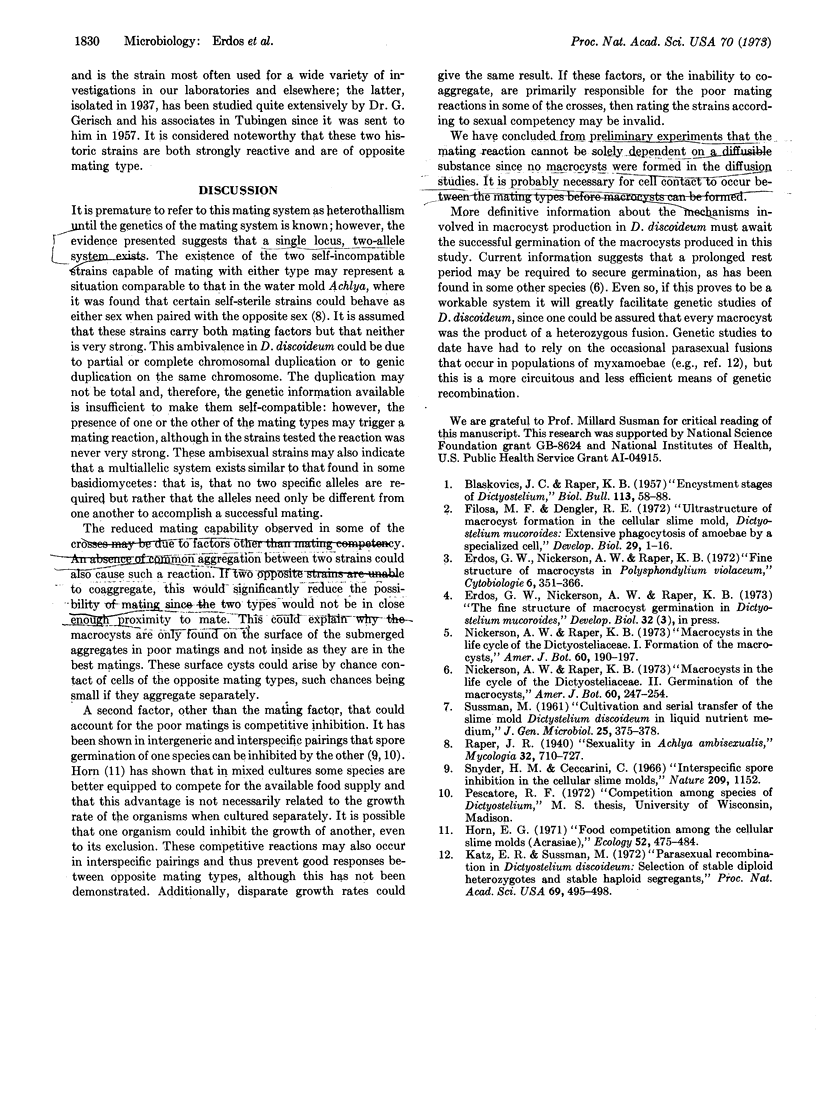Abstract
Strains of Dictyostelium discoideum were paired in various combinations. Certain pairings resulted in the production of macrocysts, which are thought to be the sexual stage in the cellular slime molds. One selfcompatible strain was found. Other strains produced macrocysts only when paired with an alternate mating type. Two strains were found to form macrycysts when paired with either mating type but not alone or with each other. Several strains did not form macrocysts under any circumstances. Strains were graded according to their mating competency based on the number of macrocysts produced relative to the aggregated myxamoebae observed in the pairings.
Keywords: cellular slime molds, sexuality, self-incompatibility, variation
Full text
PDF


Selected References
These references are in PubMed. This may not be the complete list of references from this article.
- Filosa M. F., Dengler R. E. Ultrastructure of macrocyst formation in the cellular slime mold, Dictyostelium mucoroides: extensive phagocytosis of amoebae by a specialized cell. Dev Biol. 1972 Sep;29(1):1–16. doi: 10.1016/0012-1606(72)90038-3. [DOI] [PubMed] [Google Scholar]
- Katz E. R., Sussman M. Parasexual recombination in Dictyostelium discoideum: selection of stable diploid heterozygotes and stable haploid segregants (clones-temperature sensitive-ploidy-fruiting bodies-spore-slime mold). Proc Natl Acad Sci U S A. 1972 Feb;69(2):495–498. doi: 10.1073/pnas.69.2.495. [DOI] [PMC free article] [PubMed] [Google Scholar]


